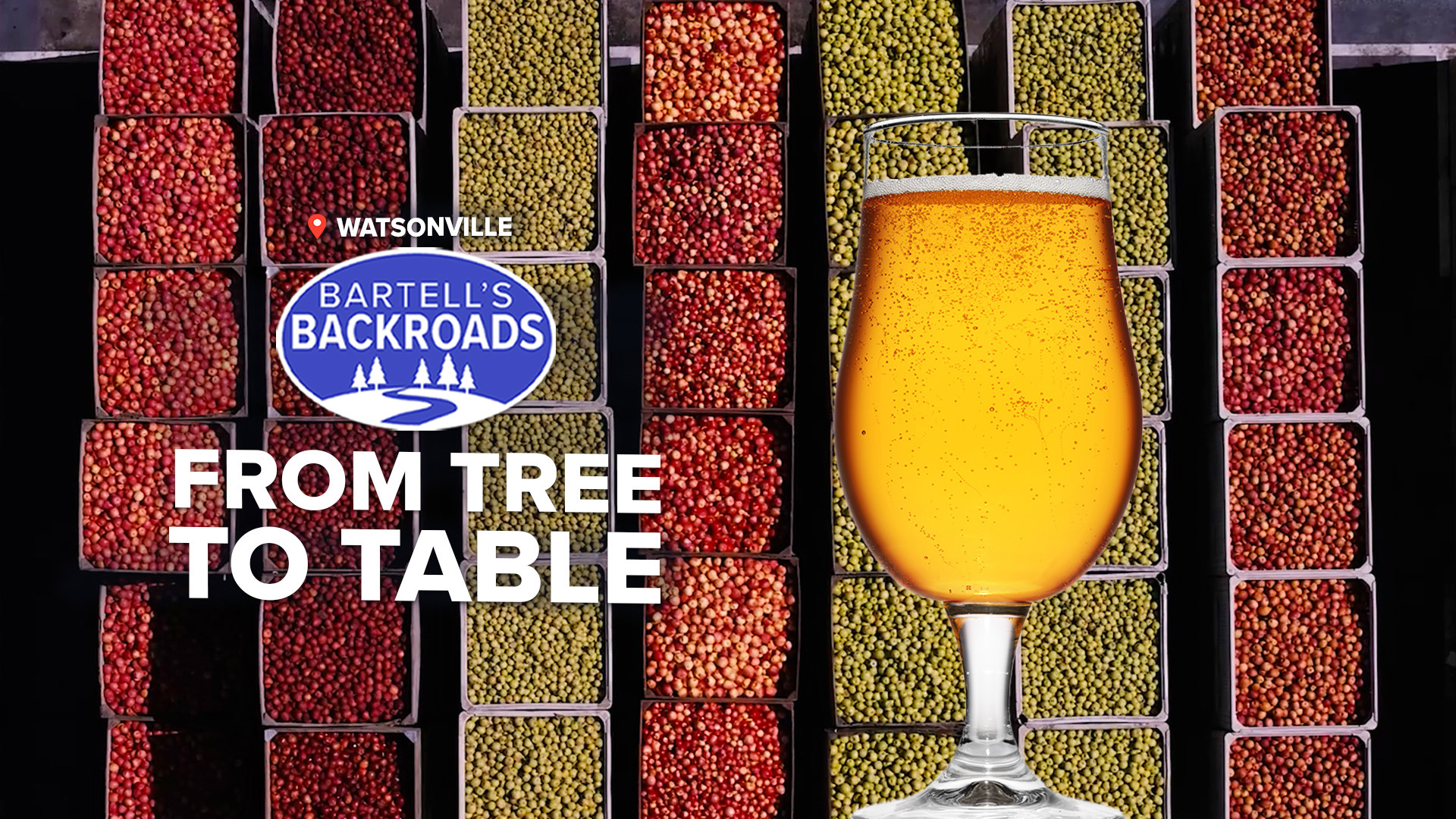WATSONVILLE, Calif. — Apple harvest in Santa Cruz’s Pajaro Valley generally takes place between mid-August to November. It’s a busy time in the town of Watsonville, which is one of California’s largest producers of apples. More than a dozen varieties are grown there and about 95% of all the apples picked in the area go to one company, Martinelli’s, to make apple juice and sparkling cider.
“Before this product, nobody was making sparkling apple cider. We are the largest producer of sparkling apple cider in the world,” said Martinelli’s CEO Gun Ruder.
Whether you were a kid or are now an adult, chances are you've celebrated an event with a glass of Martinelli’s non-alcoholic sparkling cider. For over 150 years, Martinelli’s has produced apple juice and apple juice products, and it all starts with Pajaro Valley apples.
“This is what makes Martinelli's unique. We have at least seven different varieties of apples coming down this trim line,” Ruder said.
Getting those seven varieties of apples into the iconic bottles is no easy task. It requires a proprietary process of pressing the apples, filtering and pasteurizing the juice, and putting it into the bottles all within two hours.
“We run anywhere from 200,000 bottles to maybe 400,000 bottles a day go through this plant,” Ruder said.
Martinelli’s distributes to every state in the U.S. and 40 countries overseas. Today, nearly all of products are non-alcoholic, but that wasn’t the case in 1868 when the Martinelli family started the company.
“Our founder, Stephen, came over (and) figured out, 'Wow, we've got all these apples. Let's start making (at that time) hard cider,'” Ruder said.
► See an interactive map of everywhere John has visited on the backroads
► Watch all of the Backroads videos
► Follow John on Facebook
The Martinelli’s were Swiss immigrants who came to California during the gold rush but struck it rich quenching the thirsty palates of early settlers who didn’t have safe drinking water.
“Hard cider. Yeah, that was kind of the Gatorade of its day in a way that that was what you can drink safely,” Ruder said.
Due to the alcohol in hard apple cider, bacteria and disease can’t survive and, in the past, most people including kids drank it on a daily basis until Prohibition in the 1920s.
“When Prohibition hit, we were able to apply pasteurization and start making nonalcoholic products,” Ruder said.
Martinelli’s apple juice became so popular that even after Prohibition, people bought more juice than hard cider.
“We needed more space to service the non-alcoholic side so, since the 1970s, we didn’t serve hard cider,” Ruder said.
According to Ruder, the secret ingredient that kept people coming back for their juice and sparkling cider is a very special apple called the Newtown Pippin. The iconic bottle also helped build the company’s brand. In the early 1900s, they would promote the juice by stacking bottles in tall pyramids or put extra-large bottles on the back of delivery trucks. Ruder says the bottles were so important that when there was a bottle cap shortage during World War II, Martinelli’s used recycled Coke bottle caps.
“They would collect all the bottle caps, pound those bottle caps and recycle them and put them on Martinelli's sparkling juice so we could survive WWII,” Ruder said.
In honor of Martinelli’s rich history, the company is bringing back a lineup of hard cider including one of the original recipes from 1868. For over 150 years now, Martinelli’s has provided a celebratory drink for alcoholic and non-alcoholic drinkers and it’s all thanks to apples specifically grown in the Pajaro Valley.
THIRSTY FOR MORE? WATCH THIS BACKROADS: How California's oldest sparkling wine maker was saved by jailbreaking granny | Bartell's Backroads



















